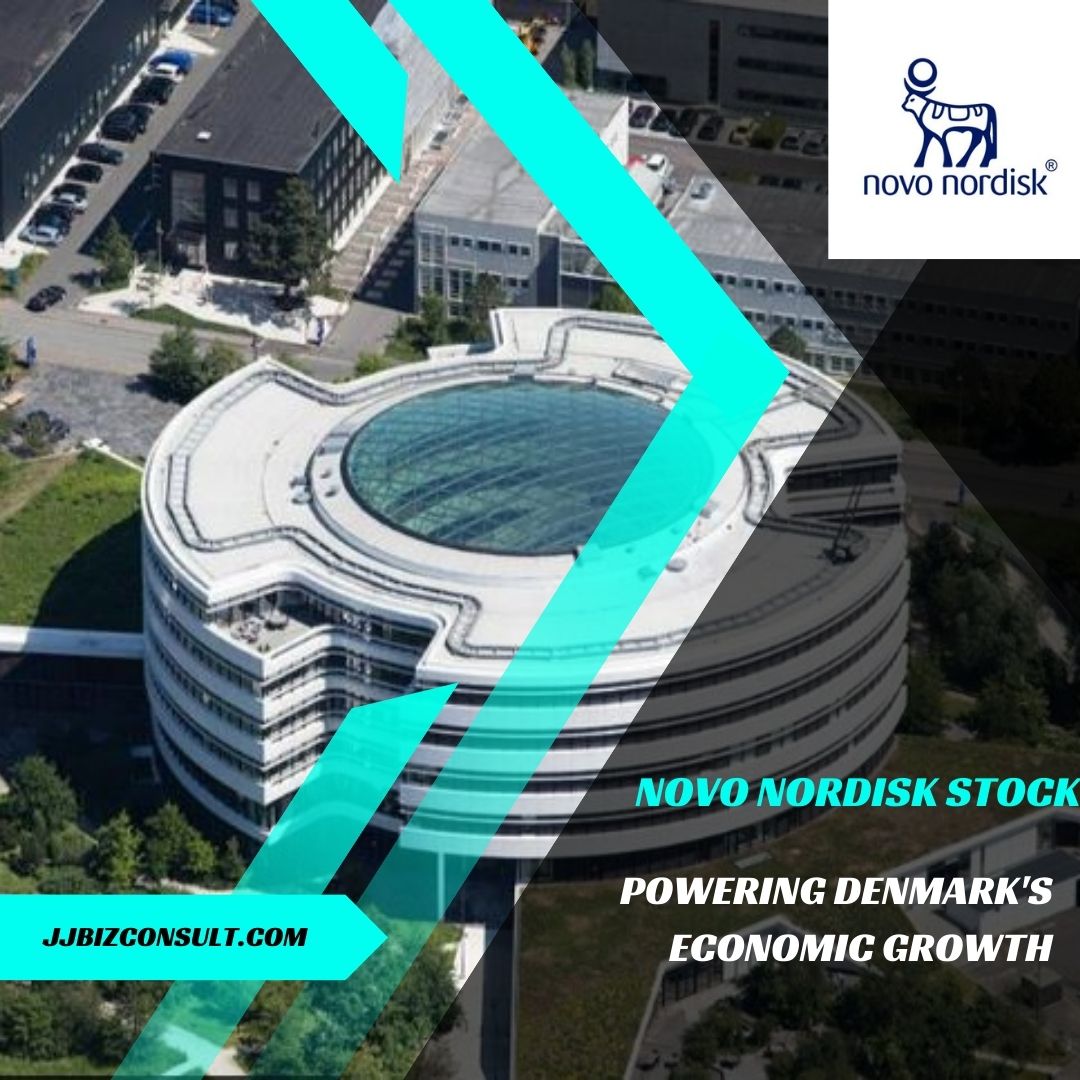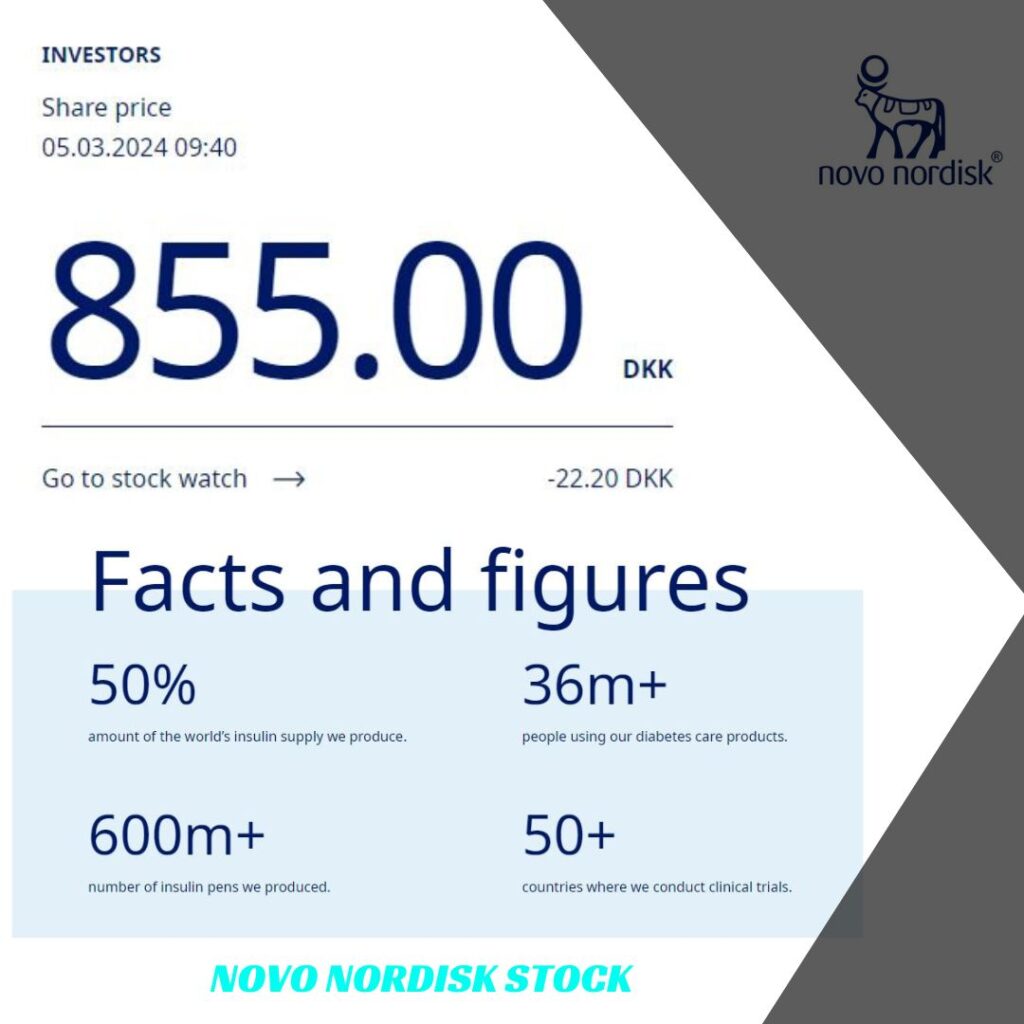
Novo Nordisk Stock: Powering Denmark's Economic Growth
Novo Nordisk stock (NVO) has become a powerful force in the Danish economy, driving growth and resilience in recent years. This article explores the impact of Novo Nordisk’s weight-loss drugs, Ozempic and Wegovy, on Denmark’s GDP, job creation, and global standing.

How Novo Nordisk Stock Fuels Denmark’s Economy
- Economic Resilience: In 2023, Denmark faced economic challenges. However, the pharmaceutical industry, led by Novo Nordisk, prevented a GDP contraction. Statistics Denmark reported the sector’s significant contribution to the 1.8% GDP growth in 2023.
- Stellar Performance: Novo Nordisk has experienced remarkable financial success. In January 2024, the company reported a 31% increase in sales, reaching $33.8 billion. Projections for 2024 are equally promising, with sales expected to rise by up to 26%.
- Ozempic and Wegovy: The Game Changers: These weight-loss drugs have revolutionized diabetes management and weight loss, contributing significantly to Novo Nordisk’s success and boosting Denmark’s economic landscape.
The Ripple Effects of Novo Nordisk
- Job Creation: Novo Nordisk’s growth translates into job creation for scientists, researchers, and manufacturing professionals in Denmark.
- Research & Development: The company’s dedication to R&D strengthens Denmark’s position as a hub for life sciences innovation.
- Global Recognition: Novo Nordisk’s success has elevated Denmark’s global economic standing. The company’s market capitalization surpasses even luxury giants, making it Europe’s most valuable company.
A Prescription for Prosperity
Novo Nordisk’s commitment to improving health outcomes has become a recipe for Denmark’s economic prosperity. The success of Novo Nordisk stock (NVO), fueled by Ozempic and Wegovy, extends beyond financial figures, shaping the lives of millions and impacting Denmark’s future.
#PRESS: Novo Nordisk invests more than 42 billion Danish kroner in expansion of manufacturing facilities in Kalundborg, Denmark
— Novo Nordisk (@novonordisk) November 10, 2023
Novo Nordisk’s history
A Century of Innovation: From Insulin to Global Leadership
Founding Pioneers: August Krogh and Marie Krogh
The story begins in the early 1920s when Danish Nobel laureate August Krogh and his wife, Marie, a doctor living with diabetes, heard about the groundbreaking discovery of insulin. Intrigued by the potential of this life-saving medicine, they embarked on a mission to bring it to Denmark.
- Nordisk Insulinlaboratorium: The Birth of Insulin Production
- August Krogh traveled to Canada to seek permission from the insulin researchers to produce this vital medication in Denmark.
- Joined by scientist Hans Christian Hagedorn and August Kongsted, they established Nordisk Insulinlaboratorium.
- In March 1923, the first patients were treated with their locally produced insulin, marking the beginning of a century of innovation in protein-based treatments for serious chronic diseases.
- Novo Terapeutisk Laboratorium: A Competitor Emerges
- In 1925, former Nordisk employees, brothers Harald and Thorvald Pedersen, founded Novo Terapeutisk Laboratorium.
- The race to defeat diabetes intensified as Novo and Nordisk competed vigorously.
- Merger and Growth: Novo Nordisk
- In 1989, Novo and Nordisk merged to become Novo Nordisk A/S.
- The company’s commitment to diabetes care, obesity care, haemophilia care, and therapies for rare endocrine disorders propelled it to global leadership.
- Today, Novo Nordisk employs over 48,000 people worldwide and markets its products in 168 countries.
Key Milestones and Contributions
- Insulin Production Revolutionizes Diabetes Care
- Nordisk Insulinlaboratorium commercialized insulin production after refining the extraction and purification techniques.
- With insulin, diabetes was no longer a death sentence, and life expectancy improved dramatically.
- NPH Insulin: A Game Changer
- In 1946, Hans Christian Hagedorn developed NPH (Neutral Protamine Hagedorn) insulin.
- NPH accounted for much of the world’s consumption of longer-acting insulin, reducing the burden of diabetes treatment.
- Named after Hagedorn, who discovered the prolonging effect of protamine on insulin.
- Foundation Ownership and Holistic Care
- The Pedersen brothers founded the Novo Foundation in 1951, supporting the company’s development.
- Novo and Nordisk established diabetes hospitals in the 1930s, gaining insights into patients’ needs.
- In 1992, the two hospitals merged to become the Steno Diabetes Center, emphasizing holistic care.
- Global Recognition and the Apis Bull
- Novo Nordisk’s success elevated Denmark’s standing globally.
- The iconic Apis bull, one of ancient Egypt’s sacred animals, became the company’s logo.
Conclusion: Novo Nordisk Stock: A Legacy of Health and Innovation
Novo Nordisk’s journey from insulin pioneers to a global healthcare leader exemplifies the power of scientific discovery, compassion, and unwavering dedication. As Ozempic and Wegovy continue to transform lives, they carry forward the legacy of those visionary founders and the countless individuals who have contributed to this remarkable century of progress.
NVIDIA stock forecast: NVIDIA’s Unprecedented Climb to AI Dominance: By the Numbers
Disclaimer: The information provided in this blog post is for informational purposes only and does not constitute financial or medical advice. Consult a qualified professional for personalized guidance.




